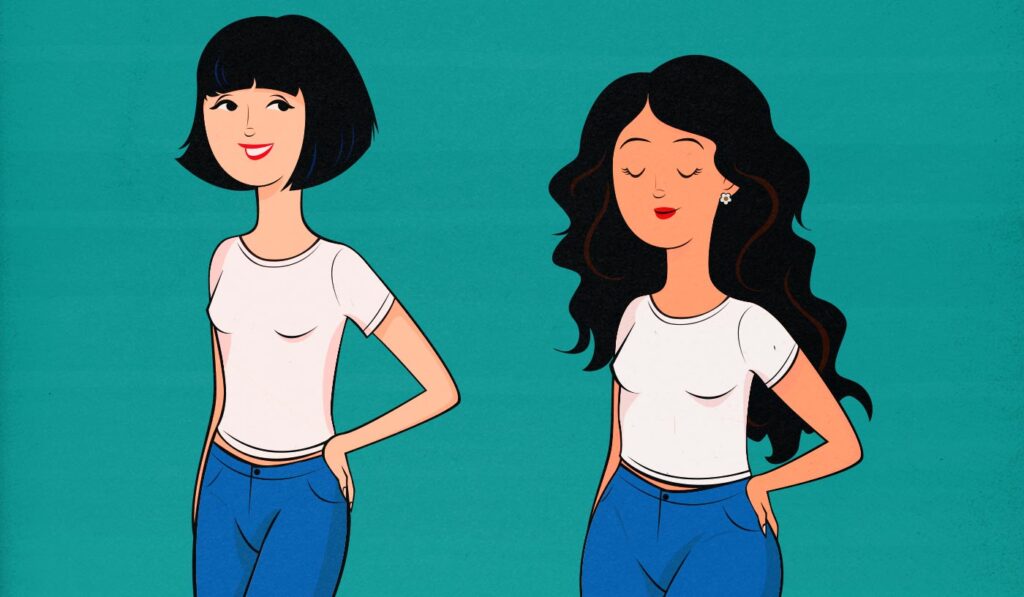
“Why Am I So Skinny?” Why Some Women Can’t Gain Weight
In the middle of an obesity epidemic, as almost everyone else is desperately trying to lose weight, it can be lonely and confusing as a skinny woman trying to gain weight. The common advice is to eat more food, and that makes sense, but some skinny women actually eat quite a lot and still can’t gain weight.
We’re naturally skinny ourselves, and we’ve spent the past 15 years helping over 15,000 naturally skinny people build muscle, gain weight, get fitter, and improve their health. Our clients include naturally thin high school, college, and professional athletes, as well as women on our Olympic rugby team. We’ve also worked with underweight teens and grandmothers. This is what we do.
You’re probably naturally skinny because you have a thinner bone structure, fewer fat cells, a faster metabolism, a smaller stomach, or a lower appetite. Maybe you have all of those traits. I do.
Fortunately, there are solutions to all of these problems. In fact, most of them aren’t even problems. Having fewer fat cells is a good thing. There’s no downside to it. It’s a pure advantage, and one you can benefit from for the rest of your life.
Gaining weight and building muscle is difficult, though. It’s hard to build curves where you want them. You might find yourself accidentally gaining belly fat as you get older. It’s frustrating to lose weight when you get stressed or sick.
Let’s talk about what’s going on and how to fix it.
Our History With Skinniness
Before we get too deep, I want to show you that we have personal experience with this. Both Cassandra and I are naturally thin, and both of us managed to gain a significant amount of weight.
I started with a BMI of 16, which is clinically underweight. I was also at high risk of a heart attack in my early twenties because of my poor lifestyle. I gained 70 pounds in my mid-twenties, finishing with a healthy BMI and dramatically better health markers. I’m now a certified conditioning coach with 15 years of experience helping thin people gain weight.
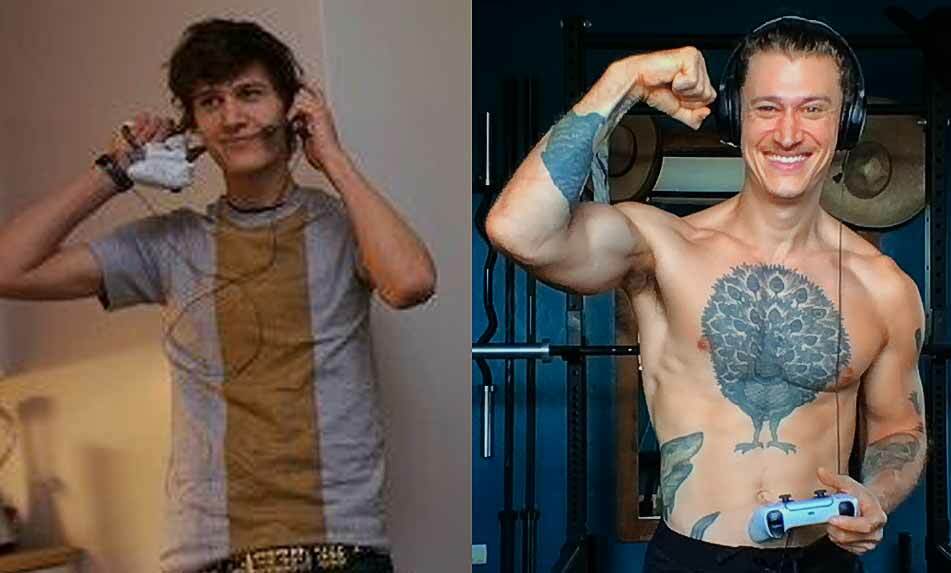
My wife, Cassandra, has a similar history. She was underweight in her mid-twenties as well, and that inspired her to become a nutritionist. She’s gained a little over 20 pounds:

We’ve been through this ourselves, worked with thousands of clients, and consulted most of the top experts. We know this topic inside and out. Whatever it is that’s keeping you skinny, we’ve probably seen it many hundreds or thousands of times.
It Isn’t As Simple As “Just Eat More”
Almost all of our clients have been bothered about their skinniness. Not out of malice, just confusion. People find it confusing that we’re naturally thin. They don’t understand why we can’t just “eat a burger.” They don’t realize how frustrating it is to get that advice from everyone we know.
Telling a naturally skinny woman to eat more is as silly as us telling an overweight person to “just eat less.” The advice isn’t wrong, but it also doesn’t work very well.
Skinniness and obesity are both calorie issues. If we could eat more, we could gain weight. If they could eat less, they could lose it. But genetic and environmental factors can make that extremely difficult. So, let’s talk about those factors and what we can do about them.
Wait—You Want to GAIN Weight?!
It was once common for women to be thin. Throughout most of history, people have struggled to find enough food. They were also more active, burning off more of what they ate. And so it was actually fairly common for women to struggle with being too skinny.
From the 1930s to the 1970s, there were even mainstream ad campaigns selling weight-gain supplements to women:
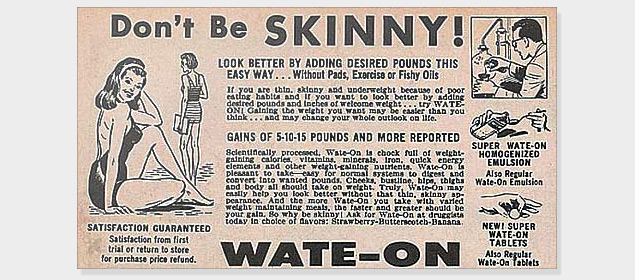
Then foods started becoming cheaper, more processed, higher in calories, and tastier. Some research shows that people are consuming around 200 more calories from carbs and 200 more calories from fat than they were in the 1970s (study).
At the same time, our lifestyles became more sedentary. Most people started eating more and moving less. Step counts fell. It’s now fairly common for people to get fewer than 3,000 steps per day.
According to the CDC, 13% of adult Americans were overweight in the 1960s. By 2008, that number had risen to 34%. Now, 68% of women are overweight or obese. The average American woman has a BMI of 30, which is obese.
The Naturally Skinny Body Type
Naturally skinny people are often said to have an “ectomorph” body type. “Ecto” refers to the ectoderm—the skin. It’s a word for people who are skinny.
The problem is that these body types (somatotypes) come from old psychological research trying to link skinny people with introversion and neuroticism. That research didn’t pan out. They couldn’t find a link between body type and personality. But the term stuck around, especially in some health and fitness circles.
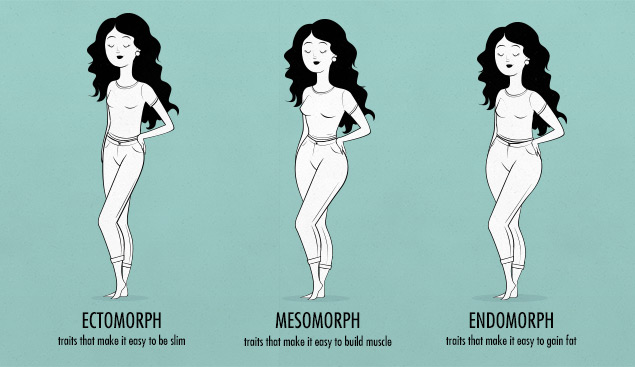
Whatever term you use, naturally skinny people often share a few physical traits:
- Thinner bones
- Fewer fat cells
- Longer spines and limbs
- A more adaptive metabolism
- A modest appetite
- A smaller stomach
Some of these traits are related to each other. For example, taller people tend to have much longer bones, but they don’t usually have much thicker bones, giving them thinner proportions. If you look at female basketball players, you’ll see what I mean:
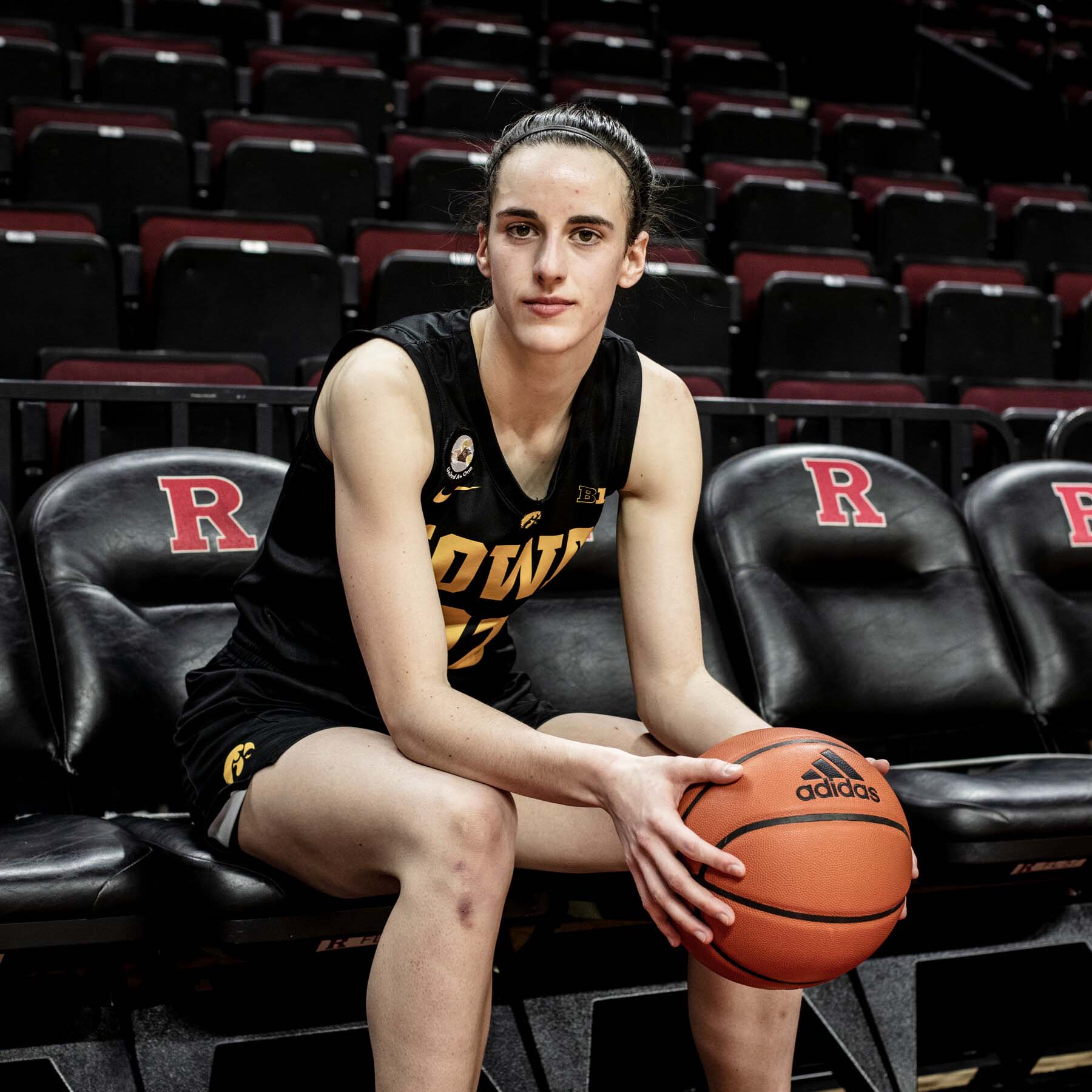
For another example, fat cells call out for energy when they get depleted. That means the fewer fat cells you have, the fewer of them are in that chorus crying out for energy, and so they can’t stimulate your appetite as much. You won’t suffer from the same level of cravings as the average person.
A Thinner Bone Structure
How Hormones Affect Your Body Shape
According to research done at Columbia University, before puberty, both women and men have more or less the same body shape—that of a string bean. When puberty hits, a couple of things usually happen:
- Testosterone causes the growth of broader shoulders and muscle mass in both women and men.
- Estrogen causes women to develop broader hips and to store more fat in their breasts, butts, hips, and thighs.
- Your body develops the number of fat cells it needs to store the food you’re eating. More on this in a second.
Most men are shaped more by testosterone, and most women are shaped more by estrogen. This causes most men and women to look quite different from one another (sexual dimorphism). Men tend to gain more muscle, whereas women develop bigger hips, thighs, butts, and breasts.
At this point, you might be thinking, “But I went through puberty and I’m still a string bean!” That’s fairly common, actually.
The Four Female Body Shapes
Everyone has different levels of the two hormones, and there are more factors at play, but the string bean body shape is the most common one. North Carolina State University found that 46% of women have a thin bone structure.
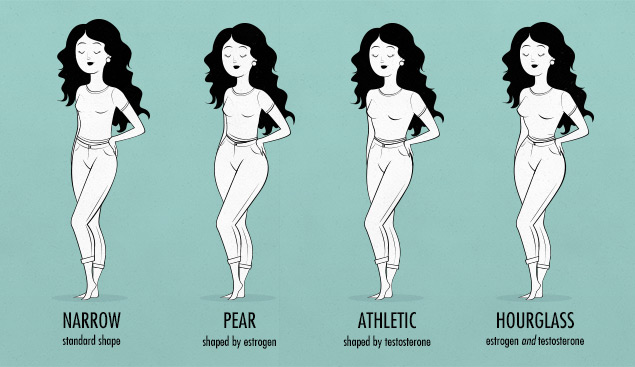
It’s shaped by average amounts of both estrogen and testosterone. That doesn’t mean that most women are thin, just that most women have narrower bone structures.
The Pear Body Shape—20% of Women. The pear body type is shaped even more heavily by estrogen. Estrogen causes structurally broader hips. It also causes fat to hang out primarily in the thighs, buttocks, and breasts.
The Athletic Body Shape—14% of Women. This is the body type shaped more heavily by testosterone, although testosterone levels are still just a fraction of what men typically have. This body type will often have broader shoulders, smaller breasts and an athletic edge over other women.
The Hourglass Body Shape—8% of Women. The hourglass physique is shaped more heavily by both testosterone and estrogen. It’s a more hormonal physique overall. The testosterone creates structurally broader shoulders and makes it relatively easy to build muscle. The higher estrogen levels mean that the hips are naturally wider and also that more fat gets stored in the hips, thighs, and breasts.
How to Build an Hourglass Figure
Most women are a mix of body types. You’ll probably find that you have a narrow bone structure with hints of the other body types showing through.
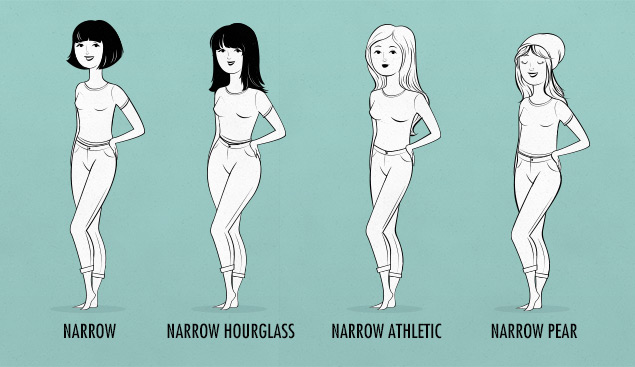
By the time you’re an adult, it is what it is. Your bone structure is set. You won’t gain any new fat cells, either. Your fat cells will inflate and shrink, but you won’t gain new ones, so you’ll always be naturally leaner than average.
You can still change your shape, though. The more muscle you build, the wider your shoulders and hips will get. You can also build much larger glutes, develop better muscle tone, and gain or lose fat. If you have a healthy amount of body fat and muscle, you’ll almost certainly have an attractive and feminine body shape.
Even if you’re naturally skinny, you can build plenty of muscle. You won’t ever be stocky, thick, or musclebound, but you can certainly become toned, healthy, and athletic.
The problem is that to build muscle, you need to gain weight, and gaining weight can be very difficult for naturally skinny people.
Fewer Fat Cells
It’s normal for thin people to have around 30 billion fat cells (study). The average person has 40–60 billion. Some people have over 150 billion. After that, your fat cells can expand and shrink, but you won’t build more of them.
When your fat cells are depleted, they call out for food, stimulating your appetite. When you have fewer fat cells, you can be lean without needing to deplete them. Even then, 30 billion fat cells can’t scream nearly as loudly as 150 billion.
If you’re naturally lean, it’s a great genetic advantage that will stay with you all through your life. If you don’t eat well or exercise, you might eventually become “skinny fat,” but you probably won’t ever become obese.
A Hardgainer’s Metabolism
If you’ve ever wondered why you’re so skinny even though you eat so much—this is the section for you. Many naturally skinny women feel like caloric bottomless pits. They feel that no matter how much food they shovel into their mouths, their weight still refuses to budge on the scale.
They told you to eat a burger, and you did, but it didn’t work!
Skinny Women Can Have Faster Metabolisms
Most people burn a typical number of calories (study). You can look at their weight and body fat percentage to roughly estimate how many calories they burn. That’s how most calorie trackers work.
However, some people burn more calories than expected (study, study, study). If you weigh 120 pounds, you probably burn about 1,300–1,600 calories at rest, but there’s a smaller chance that you burn anywhere between 1,000–1,900 calories. That’s a 900-calorie difference at the extreme ends! That’s more than enough to account for an extra burger every day.
If you want to learn more about your metabolism, I’ve made a simple calculator here. It won’t just tell you how many calories you probably burn, it will also tell you the upper and lower limits (based on the standard deviations in the three metabolism studies referenced above).
Subconscious Movement
You might also be more active than usual, and you might not even know it (study). One study found that when people went from lying down to sitting in a chair, they burned 3% more calories. However, some people sat with a less efficient posture or started fidgeting absent-mindedly. Those small subconscious differences caused them to burn 54% more calories. The differences were even more dramatic when standing (study).
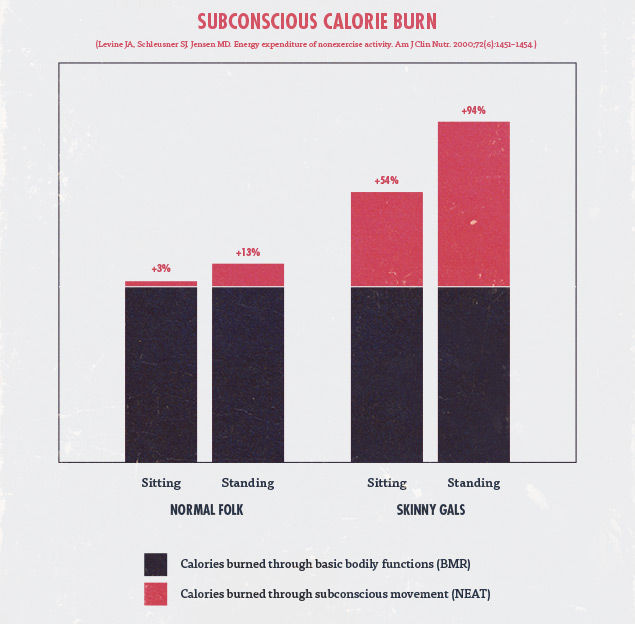
For another example, James Levine, a leading metabolism researcher, recruited ten obese people and ten lean people and measured their postures and movements every half-second for ten days (study). He did this by using high-tech underwear.
The lean people spent two more hours standing than the obese people, burning an estimated 350 more calories each day. This held true even when the naturally skinny people gained weight, leading him to believe this is largely genetically predetermined.
Adaptive Metabolisms
Some skinny people don’t gain weight during overfeeding studies. In one study, participants were overfed by 1,000 calories per day for eight weeks and instructed not to exercise (study). Most participants gained around 5 pounds, while one person gained 10 pounds, and another gained 1 pound.
This “hardgainer” phenomenon puzzled researchers for a long time, but now we know that our higher metabolisms are largely explained by extra subconscious movement. Maybe you normally spend most of your time sitting quietly, but when you eat that extra burger, you get the urge to clean that messy room, burning off the extra calories.
A Small Stomach Capacity
Skinny women often have smaller stomachs. In a 2001 study conducted at Columbia University, researchers discovered that thin people had smaller stomachs than overweight people. Stomachs are sort of like balloons, with each balloon coming in a different size, each able to inflate to a different degree (study).
Some skinny women are blessed with a stomach that expands until they look pregnant. Most aren’t. Most of us struggle to eat large meals. Not only is it hard to fit them into our stomachs, but they leave us feeling sluggish and bloated.
That means skinny women usually benefit from eating more often. Overweight people can experiment with intermittent fasting, and it often helps them lose weight. We need to do the opposite. We need to sneak snacks between our larger meals.
Your stomach size can change. If you get into the habit of eating bigger meals, your stomach will stretch out more easily. Sort of like how you can stretch out a balloon to make it easier to blow up (study).
You don’t necessarily need to expand your stomach, but I found it helpful. When I was skinny, I had a hard time eating more than about 500 calories per meal. Now, after a decade of being in much better shape, I can 1,200 calories of oatmeal for breakfast without any issue.
Cassandra’s stomach is still small, and she still eats modest meals. She just starts her day with a smoothie and has a snack or two.
Dopamine Release & Eating
Eating releases dopamine and other feel-good hormones. Eating is important for our health and survival, so it makes sense that we would find it pleasurable. Some people take advantage of that hormonal response, using food as a way to calm themselves during stressful times. Most skinny people don’t.
It’s fairly common for naturally skinny people to forget to eat when they get busy, stressed, or excited. It turns our appetites right off.
As a result, the average person gains weight during harder periods of their lives, whereas skinny people tend to lose weight. Over time, their weight drifts up while ours drifts down.
What’s a Skinny Gal to Do?
Weight Training
It takes about 3,500 calories to gain a pound of fat, but it only takes 800 extra calories to gain a pound of muscle (full explanation). That means if you’re stimulating muscle growth, you can gain weight four times more efficiently. It will also look better and be healthier. And you’ll build stronger muscles and denser bones.
Lifting weights will probably stimulate you appetite, too. You’ll find yourself naturally wanting to eat a little bit more food, and even a small amount of extra food will probably get your weight moving up. If it doesn’t, try blending up a high-calorie smoothie. That’s usually enough.
Furthermore, Dr. Eric Helms found that lifting weights calms overactive metabolisms. This means that if you gear into a lifting routine, you may notice that you instinctively start to take things a little easier. You may start burning fewer calories simply because you’ll be calmer during the day. Instead of sitting with a more active posture, you’ll feel like resting, and you’ll sit more peacefully.
We have an article about weight training here.
Cardio
Cardio is fantastic for your health, and it won’t interfere with muscle growth. However, it does burn a tremendous number of calories, which can make it harder to eat enough calories to gain weight.
If you’re having a hard time building muscle while doing cardio, it might help to ease back on cardio while you focus more of your effort on lifting weights, building muscle, and gaining weight. If you completely stop doing cardio, you’ll lose some of your fitness, which would be bad. It’s better to trim it back a bit. Maybe cut it in half.
Once you’ve vanquished your skinniness, you can go back to doing more cardio. As long as you keep stimulating your muscles, your body won’t want to get rid of them. You could even scale back your lifting a bit, going from lifting weights 3–4 times per week to lifting weights 2–3 times per week.
Eat A “Bulking” Diet
A “bulking” diet is designed to make it easier to build muscle and gain weight. Despite the name, a bulking diet won’t make you bulky. They’re (usually) designed to help you build muscle fairly leanly. And if you’re naturally thin, building muscle won’t make you very thick:
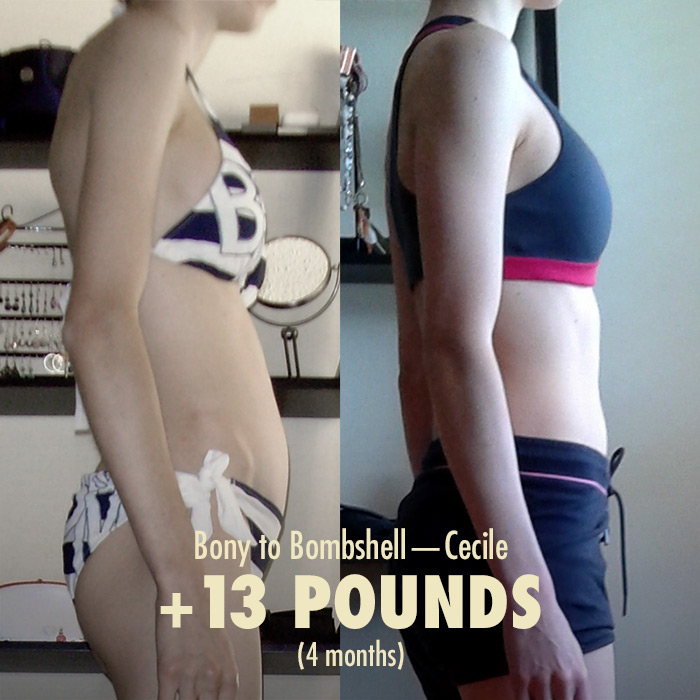
Some bulking diets are healthier than others. We recommend eating one of the healthier ones, focusing on foods that are rich in calories, protein, carbs, fat, fibre, and nutrients. Think of foods like nuts, seeds, beans, lentils, rice, yogurt, cheese, salmon, chicken, ground meat, fruits, vegetables, dark chocolate, olives, olive oil, and avocado oil.
You can combine those foods into traditional and healthy meals. You could eat chicken, rice, and broccoli like a bodybuilder. But also think of meals like chili, picadillo, lentil stew, stir fry, paella, sushi, sandwiches, pasta, dense bean salads, wraps, burritos, rice bowls, and smoothies. You can snack on homemade protein bars and yogurt parfaits.
Here’s an article about how to eat for muscle growth and weight gain.
How to Start
Skinny women usually have some combination of a thin bone structure, fewer fat cells, a faster metabolism, a smaller stomach, and a more modest appetite. Some of those traits are good. Some are frustrating. None of them will stop you from getting into good shape, looking fantastic, and improving your health.
Start by working out. Then, once you’re stimulating muscle growth, you can start adding more calories to your diet. Just make sure to start working out before you start eating more food. Otherwise, you’ll gain far more fat than muscle.
If you want to see what a muscle-building workout looks like, try this one:
GET THE GOOGLE SPREADSHEET OF THE
FREE BEGINNER’S FULL-BODY WORKOUT For Women
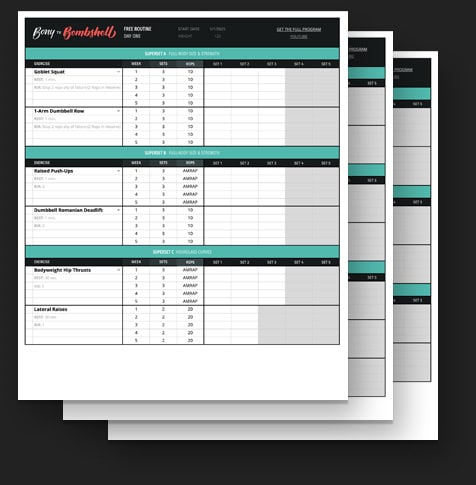
Get the workout as a Google spreadsheet. You’ll be able to pick from exercise alternatives, fill out the sheet, and get our beginner’s warm-up.
Plus, we’ll make sure you’re on the Bony to Bombshell newsletter, and send you all of our best women's muscle-building content.
If you liked this article, you’d love our muscle-building newsletter. We’ll keep you up to date on all the latest muscle-building information for women.
Or, if you want a full, healthy muscle-building program with personal support from us, check out our Bony to Bombshell Transformation Program. We’ll walk you through the entire process of gaining 10–20 pounds of muscle, including teaching you all the exercises, and giving you a full workout program, a complete diet guide, and a recipe book.
We’ll also take a detailed look at where you’re starting, help you come up with a plan, and then help you track your progress, giving you feedback as you go through the program.



